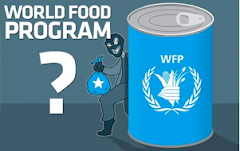Posted 8:00 AM 07/20/10 Economy
Six months on, and the statistics from the Haitian earthquake remain staggering. Consider some very basic data: Much of Haiti's capital Port-au-Prince, a city with a population comparable to Chicago, Madrid or Taipei, remains in ruins. More than 222,000 people were killed in the January quake, another 300,000 injured and about 3 million directly affected. The U.N. estimates the quake caused $4.3 billion in physical damage and $3.5 billion in economic losses. Those last two numbers combined are more than 120% of Haiti's GDP for last year.
And don't forget that Haiti was one of the world's poorest countries even before this disaster. The U.N. Development Programme says that more than half of Haiti's 9 million-plus people get by on less than $1 a day. And the weaker global economy has reduced remittances from overseas -- which reportedly provide assistance to 70% of Haitian households.
Aid Funds Trickling In
Earlier this year, dozens of countries and international organizations pledged $5.3 billion over a two-year period to help rebuild Haiti. But according to former U.S. President Bill Clinton, co-chair of the Interim Haiti Reconstruction Commission, Haiti's government has only received about 10% of those funds so far.
International aid currently accounts for about 5% of Haiti's food requirements. The country produces less than of half the food it needs and relies heavily on commercial imports.
All these figures add up to a still dire but slowly improving situation. "Since the beginning of April we've made that transition from general food distribution to a more targeted and long-term approach," says Stephanie Tremblay with the U.N.'s World Food Programme (WFP) in Port-au-Prince, "because at some point you have to move on, you have to restart the economy."
The WFP, one of the world's largest humanitarian food aid organizations, has worked with the Haitian government and other non-governmental groups to create temporary job initiatives across the country. The program varies by region, but is meant to contribute to reconstruction efforts while bolstering Haiti's suffering agricultural sector. "Workers are typically paid with a mix of food and cash," says a WFP statement on the program. "This means that they have money to cover daily expenses such as medicines and clothing, so stimulating the local economy, but also enough food to feed their families."
WFP Food Aid List
The WFP has provided more than 104,000 tons of food to Haiti over the past six months, at a cost of $176.3 million. Here's a list of the top food items the WFP is distributing in Haiti -- and their average cost per metric ton.
High-Energy Biscuits: $1,400
Tremblay says these sustaining biscuits are more expensive because they're ready-to-eat. A six-week supply of the biscuits and other food staples have been pre-positioned around Haiti in preparation for the damaging hurricane season.
Oil and Fats: $1,200
Peas and Beans: $980
Haitians still getting assistance receive a food basket -- of rice, peas, beans, oil, fat, salt and sugar -- about every two weeks. That food basket is meant to feed a family of five. Food is also distributed to about 700,000 students at schools, where they receive a hot meal daily.
Corn/Soya Blend: $510
This blend, mixed with water, is a specialized product for children under the age of five and for pregnant and nursing women. It's used by UNICEF and other humanitarian agencies to help fight malnutrition worldwide.
Cereals -- Rice and Maize: $502
Salt: $175
One item no longer on the WFP list is the Humanitarian Daily Ration, similar to a military MRE (Meal, Ready-to-Eat). Those rations, which were widespread at the start of the crisis, cost about $8,000 a metric ton.




No comments:
Post a Comment